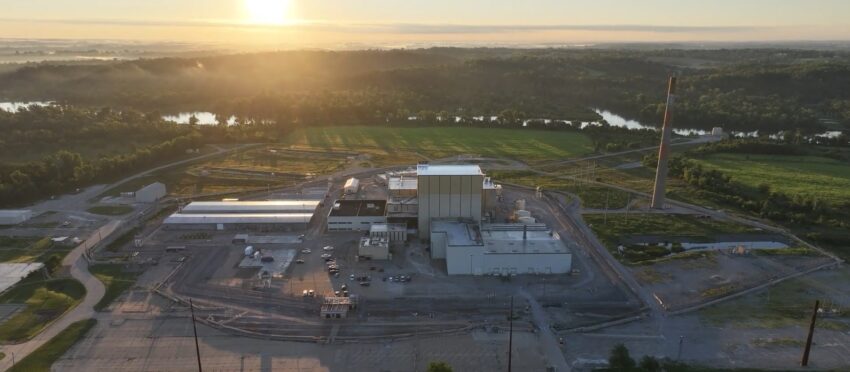
another shuttered nuclear power plant is getting Google is set to breathe new life into a shuttered nuclear power plant in Iowa as part of its strategy to secure electricity for its expanding AI data centers.
another shuttered nuclear power plant is getting
The Duane Arnold Energy Center: A Brief Overview
The Duane Arnold Energy Center, located in Palo, Iowa, has a storied history in the realm of nuclear energy. First commissioned in 1975, the plant has been a significant contributor to the local and regional power grid. However, it ceased operations in 2020, primarily due to economic factors and the increasing competition from renewable energy sources like wind and solar, as well as natural gas. The plant has a capacity of 615 megawatts (MW), which is substantial enough to power a significant number of homes and businesses.
Google’s Strategic Move
In a recent announcement, Google revealed a 25-year agreement with NextEra Energy, the plant’s owner, to purchase electricity from the Duane Arnold Energy Center once it resumes operations. Google stated, “We’re enabling the investment to restart the plant and covering costs for the production of energy from Duane Arnold.” This agreement highlights Google’s commitment to securing a reliable energy source for its AI data centers, which are increasingly demanding in terms of electricity consumption.
The Central Iowa Power Cooperative (CIPCO) will also play a role in this arrangement by purchasing any remaining electricity that Google does not utilize. This collaborative approach underscores a growing trend among tech companies to invest in nuclear energy as a viable solution to meet their energy needs.
The Broader Context of Nuclear Energy in the U.S.
The revival of the Duane Arnold Energy Center is part of a larger movement among tech giants to reinvigorate nuclear energy in the United States. The nuclear sector has faced significant challenges over the years, primarily due to the declining costs of natural gas, solar, and wind energy. As these renewable sources have become more economically viable, many nuclear plants have struggled to compete, leading to several closures across the country.
However, with the increasing demand for electricity—especially from AI and data centers—nuclear energy is being reconsidered as a reliable, carbon-free energy source that can provide power around the clock. This shift is particularly relevant as the nation grapples with climate change and the need for sustainable energy solutions.
The Role of AI in Energy Demand
The rise of artificial intelligence has created a surge in electricity demand. AI models require substantial computational power, which translates to increased energy consumption. As companies like Google expand their AI capabilities, the need for a stable and sustainable energy supply becomes critical. Nuclear energy, with its ability to provide consistent power, is emerging as a key player in meeting this demand.
Challenges Ahead: Restarting a Mothballed Nuclear Plant
While the agreement between Google and NextEra Energy is promising, the path to restarting the Duane Arnold Energy Center is fraught with challenges. Notably, the United States has never successfully restarted a mothballed nuclear plant. The complexities involved in bringing a decommissioned facility back online include regulatory hurdles, safety inspections, and significant financial investments.
According to reports from Reuters, the process of restarting Duane Arnold will require extensive planning and coordination among various stakeholders, including regulatory bodies and local communities. The Nuclear Regulatory Commission (NRC) will need to conduct thorough evaluations to ensure that the plant meets current safety standards, which may have evolved since its closure.
Comparative Efforts: Microsoft and Three Mile Island
Google is not the only tech giant exploring the revival of nuclear energy. Microsoft announced plans last year to assist in the revival of a shuttered reactor at the Three Mile Island facility in Pennsylvania, which is expected to restart in 2028. This initiative reflects a broader trend among technology companies to invest in nuclear energy as a means of securing reliable power for their operations.
The Three Mile Island plant, infamous for a partial meltdown in 1979, has been a focal point for discussions about nuclear safety and regulation. Microsoft’s involvement in its revival underscores the growing recognition of nuclear energy as a necessary component of a diversified energy portfolio, especially in light of increasing energy demands from digital infrastructure.
Future Prospects: Next-Generation Nuclear Reactors
In addition to reviving existing plants, Google is also collaborating with NextEra Energy and Kairos Power to develop next-generation nuclear reactors. These advanced designs promise to be safer, more efficient, and more adaptable to modern energy needs. However, the development and deployment of these reactors face lengthy certification and permitting processes, which can delay their introduction into the energy market.
Next-generation reactors, such as small modular reactors (SMRs), are designed to be more flexible and can be deployed in a variety of settings. They offer the potential for lower capital costs and shorter construction times compared to traditional large-scale nuclear plants. As the demand for clean energy continues to grow, these innovative technologies could play a crucial role in the future of nuclear power in the United States.
Stakeholder Reactions and Implications
The announcement of the agreement between Google and NextEra Energy has elicited a range of reactions from various stakeholders. Environmental advocates have expressed cautious optimism about the potential for nuclear energy to contribute to a carbon-free future. They recognize that while nuclear power does not produce greenhouse gas emissions during operation, concerns about nuclear waste and safety remain significant issues that need to be addressed.
Local communities near the Duane Arnold Energy Center have also voiced their opinions. Some residents are hopeful that the plant’s revival will bring jobs and economic benefits to the area, while others remain concerned about the safety implications of restarting a nuclear facility. Engaging with these communities will be essential for ensuring a smooth transition and addressing any apprehensions they may have.
Government and Regulatory Perspectives
From a governmental perspective, the revival of nuclear energy aligns with broader energy policies aimed at reducing carbon emissions and promoting sustainable energy sources. The Biden administration has emphasized the importance of nuclear power in achieving climate goals, and initiatives like the one between Google and NextEra Energy may receive support from federal and state agencies.
However, the regulatory landscape for nuclear energy is complex and often slow-moving. The NRC’s stringent safety requirements are designed to protect public health and safety, but they can also pose challenges for companies looking to restart or develop new nuclear facilities. Streamlining the regulatory process while maintaining safety standards will be crucial for the future of nuclear energy in the U.S.
Conclusion: A New Era for Nuclear Energy?
The agreement between Google and NextEra Energy to revive the Duane Arnold Energy Center marks a significant step in the ongoing evolution of nuclear energy in the United States. As tech companies increasingly turn to nuclear power to meet their energy needs, the landscape of energy production may be on the brink of transformation. While challenges remain, the potential benefits of revitalizing nuclear energy—such as job creation, economic growth, and a reliable source of carbon-free electricity—are compelling reasons for stakeholders to engage in this endeavor.
As the world moves toward a more sustainable energy future, the revival of nuclear power may play a pivotal role in balancing the demands of modern technology with the need for environmental responsibility. The coming years will be critical in determining whether initiatives like the one at Duane Arnold can successfully navigate the complexities of restarting a nuclear facility and contribute to a cleaner, more sustainable energy landscape.
Source: Original report
Was this helpful?
Last Modified: October 30, 2025 at 10:40 pm
1 views















